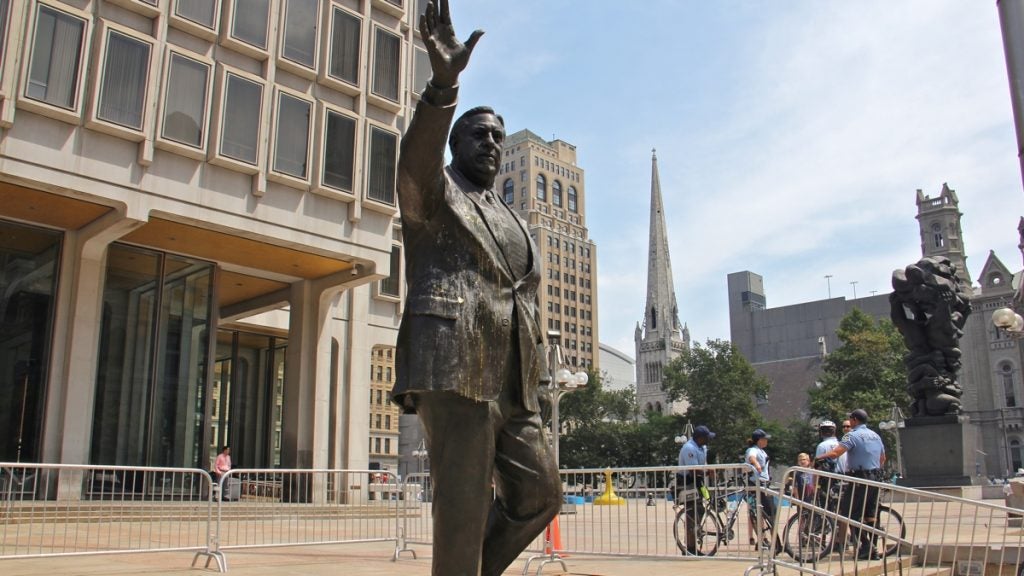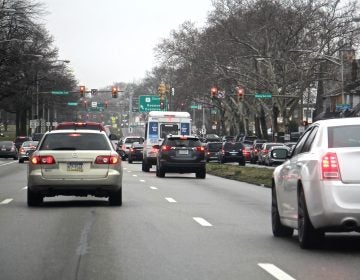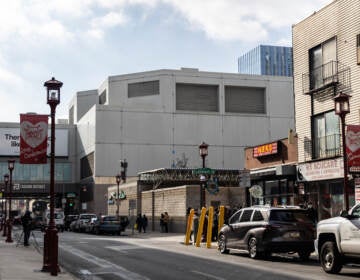Our monuments are our continuation

Earlier this month in Philadelphia, years of protest — reignited by the August events in Charlottesville — culminated in an announcement by the city that it would be removing the statue of former mayor Frank Rizzo from its central location in Thomas Paine Plaza, in front of the Municipal Services Building. Rizzo was a controversial mayor, notorious for his violent tactics against the city’s black, brown and LGBTQ communities.
The debate around the removal of the Rizzo statue is part of an ongoing public discourse about monuments in the US and beyond. I believe this illustrates people’s hunger to find physical spaces and objects in which — and at which — to process these unsettling times.
As an urban planner, person of color, and mindfulness practitioner, this political moment has helped to deepen my understanding of the power of public spaces and monuments as sites for democracy and oppression, resistance and terror, movement and stagnance. It has also helped me recognize the power of monuments as sites and symbols of shared healing.
Worldwide, monuments are a powerful instrument with which those who have been historically oppressed and marginalized, due to their social identities, have and continue to stand up for themselves, their ancestors, and their ability to heal and move forward. In 1965 Selma, 35,000 “foot soldiers” of the voting rights march successfully crossed the Edmund Pettus Bridge — named after a local politician and leader of the KKK — transforming the bridge and its name into a national symbol for civil rights and racial justice. In post-colonial New Delhi, the city has moved most of its imperial statues of British generals and governors into a relatively neglected park full of flying cricket balls. In Odessa, the artist Alexander Milov transformed a sculpture of Vladimir Lenin into Darth Vader. The transformation looks different in different contexts, places, and communities. It can be big or small, serious or playful, overt or subtle. It can be either a dismantling or a reimagining.
Thich Nhat Hanh, the Buddhist monk and peace activist, and Kaira Jewel Lingo, the mindfulness teacher, say that we should think of ourselves as not separate from those who came before us, but rather as their continuation. We have inherited both their joy and their suffering, their strength and their trauma. I know, for instance, that I have inherited much pain as well as resilience from my Japanese American grandmother and her experiences of internment during World War II. The beautiful and powerful thing about being a continuation of our ancestors is that right now, in our present lives, we have the power to transform their suffering. By healing ourselves — and our inherited pain and trauma — we are also healing our predecessors and are leaving a rejuvenated continuation for future generations.
In this context, we might think of our monuments as a physical representation of our collective continuation. Moreover, our monuments represent the shared qualities of ourselves and our predecessors that we wish to maintain in our public memory and transmit to our future generations.
In this way, the call to dismantle monuments like the statue of Rizzo is more than an act of protest against the status quo. This movement is a call for collective healing and transformation. By removing the statue of Rizzo from the heart of the City, we are not erasing his legacy, nor are we erasing the suffering and pain his political tactics may have caused our predecessors, families, and neighbors in the past. Instead, we are working towards transforming that inherited pain in the present, so that we can leave a more healthy and resilient continuation for future Philadelphians.
WHYY is your source for fact-based, in-depth journalism and information. As a nonprofit organization, we rely on financial support from readers like you. Please give today.







